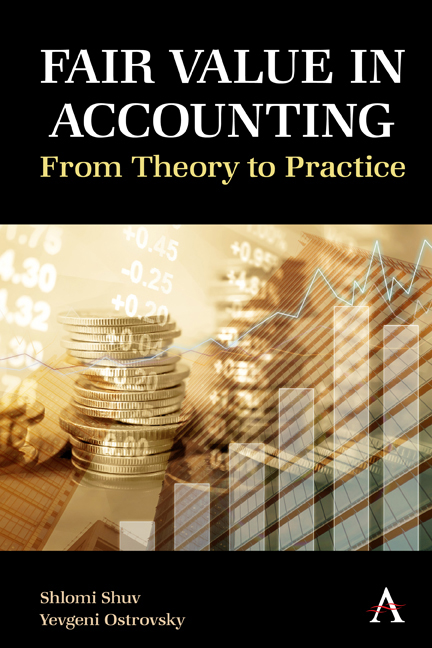Book contents
- Frontmatter
- Contents
- Preface
- Chapter 1 Background
- Chapter 2 Definition and Scope of Fair Value
- Chapter 3 Identifying the Asset or Liability to Be Measured
- Chapter 4 Determining the Market in Which the Transaction Will Take Place
- Chapter 5 Identifying Market Participants
- Chapter 6 Defining the Transaction Price
- Chapter 7 Definition of an Orderly Transaction
- Chapter 8 Fair Value at Initial Recognition
- Chapter 9 Application to Nonfinancial Assets
- Chapter 10 Measuring Fair Value of Liabilities and Equity Instruments
- Chapter 11 Application to Financial Instruments with Netting Positions
- Chapter 12 Valuation Techniques
- Chapter 13 Disclosure Provisions
Preface
Published online by Cambridge University Press: 15 September 2022
- Frontmatter
- Contents
- Preface
- Chapter 1 Background
- Chapter 2 Definition and Scope of Fair Value
- Chapter 3 Identifying the Asset or Liability to Be Measured
- Chapter 4 Determining the Market in Which the Transaction Will Take Place
- Chapter 5 Identifying Market Participants
- Chapter 6 Defining the Transaction Price
- Chapter 7 Definition of an Orderly Transaction
- Chapter 8 Fair Value at Initial Recognition
- Chapter 9 Application to Nonfinancial Assets
- Chapter 10 Measuring Fair Value of Liabilities and Equity Instruments
- Chapter 11 Application to Financial Instruments with Netting Positions
- Chapter 12 Valuation Techniques
- Chapter 13 Disclosure Provisions
Summary
Fair value, currently a very significant measurement base in financial statements, and a commonly used term in itself, is, somewhat surprisingly, a relatively new term in the world of accounting. Just to illustrate, the Framework for the Preparation and Presentation of Financial Statements, originally published in 1989 by the International Accounting Standards Board (IASB), makes no reference whatsoever to this term. This is despite the fact that measurement bases having similar or overlapping principles, such as present value or realizable value, are, indeed, mentioned.
The term “fair value” was first mentioned in US Generally Accepted Principles (US GAAP) in Statement of Financial Accounting Concepts No. 7 regarding Using Cash Flow Information and Present Value in Accounting Measurements, published by the Financial Accounting Standards Board (FASB) in 2000, although parts of the definition itself but not the term “fair value” were already used in Statement of Financial Accounting Concepts No. 6 regarding Elements of Financial Statements, originally published in 1985.
Over the years, fair value has been used increasingly by the world's leading accounting standard-setting bodies, both for measurement and for disclosure purposes. Thus, for example, using fair value as a measurement base is currently widespread in measurement of financial instruments and business combinations, and under International Financial Reporting Standards (IFRSs), fair value is also employed to measure investment property. As fair value became an increasingly used measurement base, the need to formulate a uniform and consistent rationale for fair value measurement has arisen, along with the need to put in place comprehensive disclosure principles that will provide financial statements’ users with additional information, among other things, about the reliability of fair value estimates. This rationale was first reflected in US GAAP in Statement of Financial Accounting Standards No. 157—Fair Value Measurements (SFAS 157) and thereafter in the provisions of IFRS upon publication of IFRS 13—Fair Value Measurement, which, in effect, converged with the American standard.
This book aims to serve as a comprehensive guide to fair value measurement. In this book, we gradually unfold a comprehensive framework of fair value measurement from a detail-oriented and practical standpoint, both pursuant to IFRS 13 and Accounting Standards Codification (ASC) 820. This is done while referring to subtle nuances between the two accounting standard systems, including with regard to disclosure.
- Type
- Chapter
- Information
- Fair Value in AccountingFrom Theory to Practice, pp. ix - xiiPublisher: Anthem PressPrint publication year: 2022



